|
Karachi is the financial and commercial capital of Pakistan. In line with its status as a major port and
|
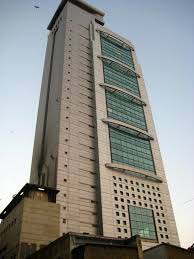 The MCB Tower The MCB Tower
|
the country's largest metropolis, it accounts
Revenue collected from Karachi includes revenue from some other areas since the Large Tax Unit (LTU) Karachi and Regional Tax Offices (RTOs) Karachi, Hyderabad, Sukkur & Quetta cover the entire province of Sindh and Balochistan. Karachi's indigenous contribution to national revenue is around 25%.
Karachi's contribution to Pakistan's manufacturing sector amounts to approximately 30 percent. A substantial part of Sindh’s gross domestic product (GDP) is attributed to Karachi (the GDP of Sindh as a percentage of Pakistan’s total GDP has traditionally hovered around 28%-30%;
|
Ocean Towar
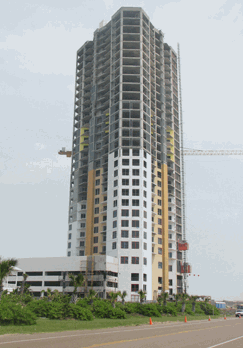
|
Most major foreign multinational corporations operating in Pakistan have their headquarters in Karachi. The Karachi Stock Exchange is the largest stock exchange in Pakistan, and is considered by many economists to be one of the prime reasons for Pakistan's 8% GDP growth across 2005.
Karachi has seen an expansion of information and communications technology and electronic media and has become the software outsourcing hub of Pakistan. Call centres for foreign companies have been targeted as a significant area of growth, with the government making efforts to reduce taxes by as much as 10% in order to gain foreign investments in the IT sector. Many of Pakistan’s independent television and radio stations are based in Karachi, including world-popular Business Plus, AAJ News, Geo TV, KTN, Sindh TV, CNBC Pakistan, TV ONE, ARY Digital, Indus Television Network, Samaa TV and Dawn News, as well as several local stations.
Karachi has several large industrial zones such as Karachi Export Processing Zone, SITE, Korangi, Northern Bypass Industrial Zone, Bin Qasim and North Karachi, located on the fringes of the main city. Its primary areas of industry are textiles,
|
Satellite view of Karachi
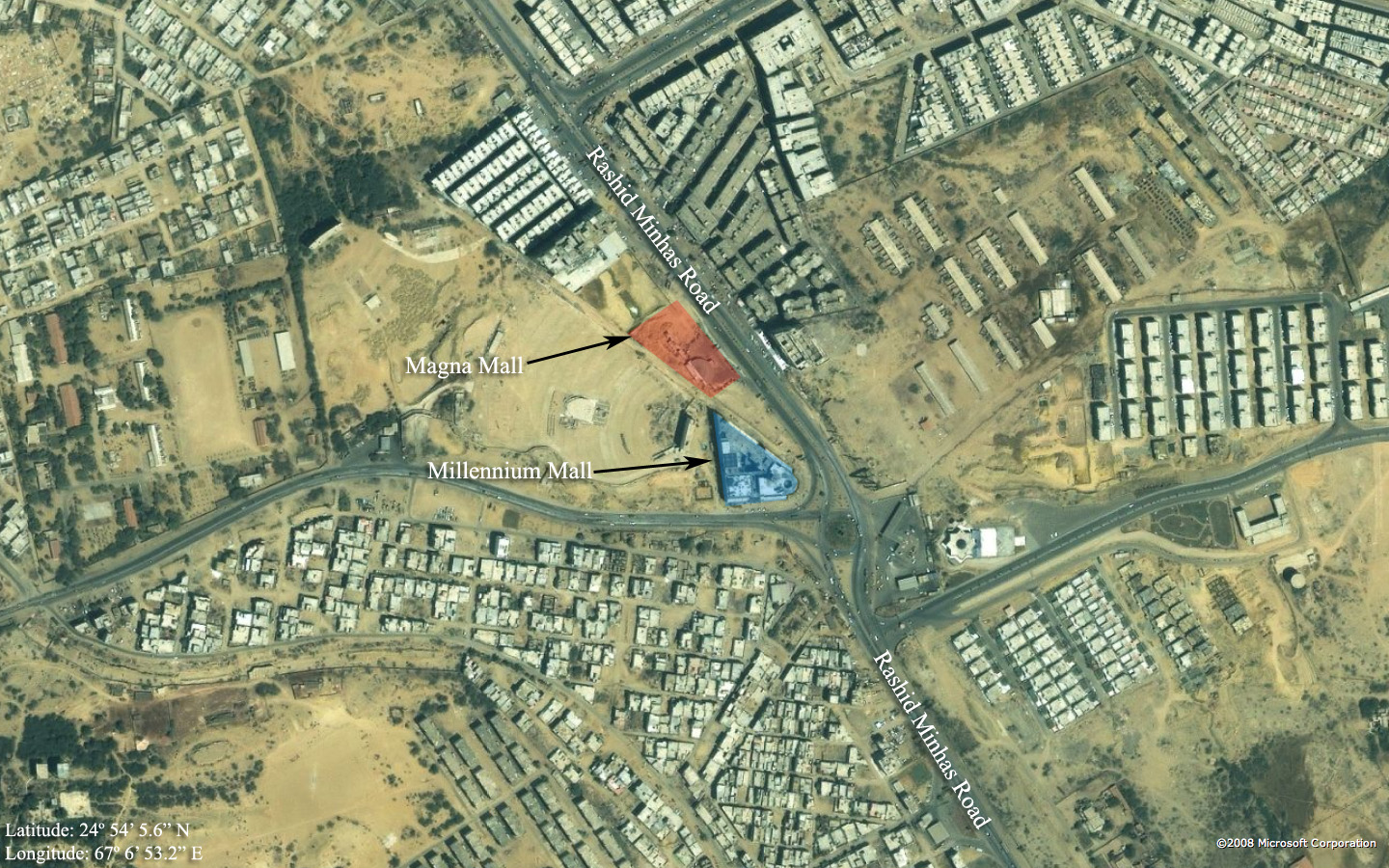
|
pharmaceuticals, steel, and automobiles. In addition, Karachi has a vibrant cottage industry and there is a rapidly flourishing Free Zone with an annual growth rate. The Karachi Expo Centre hosts many regional and international exhibitions. There are many development projects proposed, approved and under construction in Karachi.
As one of the most rapidly growing cities in the world, Karachi faces challenges that are central to many developing metropolises, including traffic congestion, pollution, poverty and street crime. These problems continue to earn Karachi low rankings in livability comparisons:
Administration
The first form of government was a conservancy board established in 1846 to control the spread of cholera in the city. The board became a municipal commission in 1852, and a municipal committee the following year. The City of Karachi Municipal Act of 1933 transformed the city administration into a municipal corporation with a mayor, a deputy mayor and 57 councillors. In 1948, the Federal Capital Territory of Pakistan was created, comprising approximately 2,103 km2 (812 sq mi) of Karachi and surrounding areas, but this was merged into the province of West Pakistan in 1961. However, the municipal corporation remained in existence and in 1976 became a metropolitan corporation, followed by the creation of zonal municipal committees, which lasted until 1994. Two years later the metropolitan area was divided into five districts, each with a municipal corporation.
|
Location of Karachi
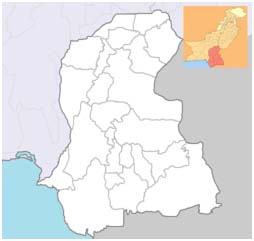
|
Again in 2011, City District Government of Karachi has been de-merged into its five original constituent districts namely Karachi East, Karachi West, Karachi Central, Karachi South and District Malir. These five districts form the Karachi Division now. City administrator is Muhammad Hussain Syed and Municipal Commissioner of Karachi is Matanat Ali Khan. There are also six military cantonments which are administered by the Pakistan Army.
Art and culture
Karachi is home to some of Pakistan's important cultural institutions. The National Academy of Performing Arts, located in the newly renovated Hindu Gymkhana, offers a two-year diploma course in performing arts that includes classical music and contemporary theatre. The All Pakistan Music Conference, linked to the 45-year-old similar institution in Lahore, has been holding its Annual Music Festival since its inception in 2004. The Festival is now a well-established feature of the city life of Karachi that is attended by more than 3000 citizens of Karachi as well as people from other cities. The National Arts Council (Koocha-e-Saqafat) has musical performances and mushaira (poetry recitations). The
|
National Museum of Pakistan
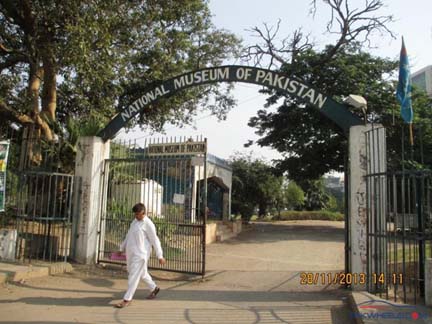
|
Kara Film Festival annually showcases independent Pakistani and international films and documentaries. Karachi is home to many theatre, music and dance performance groups, such as Thespianz Theater, a professional youth-based, non-profit performing arts group, which works non-stop on theater and arts activities in Pakistan. A well developed Fashion website serving Pakistani fashion industry is FORMA.pk.
Karachi has many museums that present exhibitions on a regular basis, including the Mohatta Palace and the National Museum of Pakistan. Karachi Expo Centre hosts many regional and international exhibitions.
|
Mohatta Palace
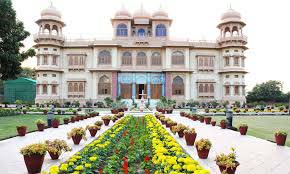
|
The everyday lifestyle of Karachi differs substantially from that of other Pakistani cities and towns. The culture of Karachi is characterized by the blending of South Asian, Middle Eastern, Central Asian and Western influences, as well as its status as a major international business centre. Karachi hosts the largest middle class stratum of the country and is the most liberal city in Pakistan.
Architecture
Karachi has a rich collection of buildings and structures of varied architectural styles. Many modern high-rise buildings are under construction. The downtown districts of Saddar and Clifton contain a variety of early 20th-century architecture, ranging in style from the neo-classical KPT building to the Sindh High Court Building. During the period of British rule, classical architecture was preferred for monuments of the British Raj. Karachi acquired its first neo-Gothic or Indo-Gothic buildings when
|
3 Talwar (Swords), Clifton, Karachi
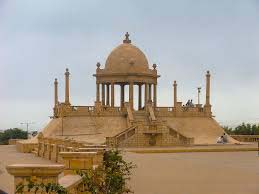
|
Frere Hall, Empress Market and St. Patrick's Cathedral were completed. The Mock Tudor architectural style was introduced in the Karachi Gymkhana and the Boat Club. Neo-Renaissance architecture was popular in the 19th century and was the language for St. Joseph's Convent (1870) and the Sind Club (1883). The classical style made a comeback in the late 19th century, as seen in Lady Dufferin Hospital (1898) and the Cantt. Railway Station. While Italianate buildings remained popular, an eclectic blend termed Indo-Saracenic or Anglo-Mughal began to emerge in some locations. The local mercantile community began acquiring impressive mercantile structures. Zaibunnisa Street in the Saddar area (known as Elphinstone Street in British days) is an example where the mercantile groups adopted the Italianate and Indo-Saracenic style to demonstrate their familiarity with Western culture and their own. The Hindu Gymkhana (1925) and Mohatta Palace are the example of Mughal revival buildings. The Sindh Wildlife Conservation Building, located in Saddar, served as a Freemasonic Lodge until it was taken over by the government. There are talks of it being taken away from this custody and being renovated and the Lodge being preserved with its original woodwork and ornate wooden staircase.
|
Dolmen City Karachi
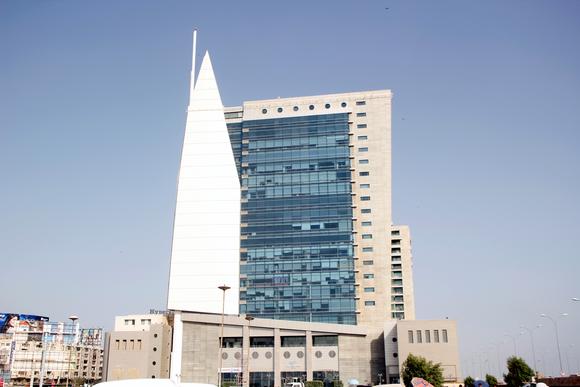
|
In recent years, a large number of architecturally distinctive, even eccentric, buildings have sprung up throughout Karachi. Notable examples of contemporary architecture include the Pakistan State Oil Headquarters building and the Karachi Financial Towers. The city has numerous examples of modern Islamic architecture, including the Aga Khan University hospital, Masjid e Tooba, Faran Mosque, Bait-ul Mukarram Mosque, Quaid's Mausoleum, and the Textile Institute of Pakistan. One of the unique cultural elements of Karachi is that the residences, which are two- or three-story townhouses, are built with the front yard protected by a high brick wall. Ibrahim Ismail Chundrigar Road features a range of extremely tall buildings. The most prominent examples include the Habib Bank Plaza, PRC Towers and the MCB Tower which is the tallest skyscraper in Pakistan.
Many more high-rise buildings are under construction, such as Centre Point near Korangi Industrial Area, IT Tower, Sofitel Tower Karachi and Emerald Tower. The Government of Sindh recently approved the construction of two high-density zones, which will host the new city skyline.
Fashion, shopping and entertainment
|
Port Grand Food and Entertainment Complex
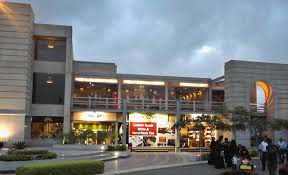
|
The night life in Karachi is believed to be the best in all of Pakistan. Karachi is also known as city of lights and the city which never sleeps. Almost every day entertainment events are held in Karachi ranging from fashion shows, concerts, or even small gigs at local cafes.
Karachi has always been proactive in organizing large events but because of the political and economic crisis in the country, activities have recently been slowed down. Karachi continues to host many different cultural and fashion shows. In 2009 a four-day-long fashion show was organized in Karachi's luxury Marriott hotel. Karachi has many glitzy shopping malls in the Clifton area, Tariq Road, Gulshan-e-Iqbal and Hyderi shopping area, such as Park Towers, The Forum, Dolmen Mall and Millenium Mall. Zamzama Boulevard is known for its designer stores and many cafes. There are many bazaars in Karachi selling different merchandise. The famous bazaars include Bohri Bazaar, Soldier Bazaar, and Urdu Bazaar. Foreign clothes brands and famous Pakistani fashion labels (such as Amir Adnan, Aijazz, Rizwan Beyg, Deepak Perwani, Shayanne Malik, Maria B, Khaadi, Sputnik Footwear, Metro Shoes, English Boot House, Cotton & Cotton, Men's Store and Junaid Jamshed) are present in shopping districts of the city. The newly built shopping center Port Grand Food and Entertainment Complex is located at Port of Karachi near Native Jetty Bridge.
Education
|
Bai Virbaijee Soparivala (B.V.S.) Parsi High School
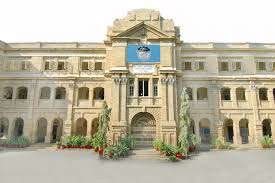
|
Karachi is the most educated city of Pakistan, with the highest literacy rate along with a gross enrollment ratio of 111%, the highest in Sindh. Education in Karachi is divided into five levels: primary (grades one through five); middle (grades six through eight); high (grades nine and ten, leading to the Secondary School Certificate); intermediate (grades eleven and twelve, leading to a Higher Secondary School Certificate); and university programs leading to graduate and advanced degrees. Karachi has both public and private educational institutions. Most educational institutions are gender-based, from primary to university level.
Karachi Grammar School is the oldest school in Pakistan and has educated many Pakistani businessmen and politicians. The Narayan Jagannath High School in Karachi, which opened in 1855, was the first government school established in Sindh. Other well-known schools include the Hamdard Public School, Education Bay [EBay] school located in karachi (for higher education) Army Public School (C.O.D.), Karachi Public school, British Overseas School, L'ecole for Advanced Studies, Bay View Academy, the CAS School, Generations School, Karachi American School, Aga Khan Higher Secondary School, the Froebel Education Centre (FEC), The Paradise School and College, Grand Folk's English School, cordoba school for a levels (founded in 1902 by r.j.k), Habib Public School, AL-Murtaza School Mama Parsi Girls Secondary School, B. V. S. Parsi High School, Civilizations Public School, The Oasys School, Avicenna School, The Lyceum School, Ladybird Grammar School, The City School, ABC Public School, Beaconhouse School System, The Educators schools, Sultan Mohamed Shah Aga Khan School, Shahwilayat Public School, Springfield School, St Patrick's High School, St Paul's English High School, St Joseph's Convent School, St Jude's High School, St Michael's Convent School, Foundation Public School,Aisha Bawanay Academy, Karachi Gems School, Aga Khan School Kharadar, St Peter's High School and Chiniot Islamia School.
|
National Academy of Performing Arts
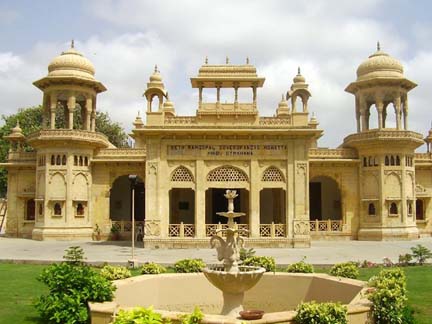
|
The University of Karachi, known as KU, is Pakistan's largest university, with a student population of 24,000 and one of the largest faculties in the world. It is located next to the NED University of Engineering and Technology, the country's oldest engineering institute. In the private sector, The National University of Computer and Emerging Sciences (NUCES-FAST), one of Pakistan's top universities in computer education, operates two campuses in Karachi. Sir Syed University of Engineering and Technology (SSUET) provides reputable training in biomedical engineering, civil engineering, electronics engineering, telecom engineering and computer engineering. Dawood College of Engineering and Technology, which opened in 1962, offers degree programmes in electronic engineering, chemical engineering, industrial engineering, materials engineering and architecture. Karachi Institute of Economics & Technology (KIET) has two campuses in Karachi and has been growing rapidly since its inception in 1997. The Plastics Technology Center (PTC), located in Karachi's Korangi Industrial Area, is at present Pakistan's only educational institution providing training in the field of polymer engineering and plastics testing services. The Institute of Business Administration (IBA), founded in 1955, is the oldest business school outside of North America. The Shaheed Zulfiqar Ali Bhutto Institute of Science and Technology (SZABIST), founded in 1995 by Benazir Bhutto, is located in Karachi, with its other campuses in Islamabad, Larkana and Dubai. Pakistan Navy Engineering College (PNEC) is a part of the National University of Sciences and Technology (NUST), offering a wide range of engineering programs, including electrical engineering and mechanical engineering. Hamdard University is the largest private university in Pakistan with faculties including Eastern Medicine, Medical, Engineering, Pharmacy, and Law. It has got Asia's second largest library called 'BAIT UL HIKMA'. Jinnah University for Women is the first women university in Pakistan. Karachi is home of the head offices of the Institute of Chartered Accountants of Pakistan (ICAP) (established in 1961) and the Institute of Cost and Management Accountants of Pakistan (ICMAP). Among the many other institutions providing business education are the Institute of Business Management (IoBM), SZABIST, Iqra University and the Institute of Business and Technology (Biztek). Leading medical schools of Pakistan like the Dow University of Health Sciences and the Aga Khan University are situated in Karachi. PLANWEL is another innovative institution it is a CISCO Network Academy as well as iCBT center for ETS Prometric and Pearsons VUE. Bahria University also has a purpose-built campus in Karachi.Mohammad Ali Jinnah University (MAJU) is a private university in Pakistan. The main campus is in Karachi; the other campus is in Islamabad. The College of Accounting and Management Sciences (CAMS) also has three branches in the city. Sindh Muslim Govt. Science College located at Saddar Town is the eldest college in Karachi.
For religious education, the Jamia Uloom ul Islamia (one of the largest Islamic education centres of Asia), Jamia Binoria and Darul 'Uloom Karachi are among the Islamic schools in Karachi.
Transport
|
CNG Bus
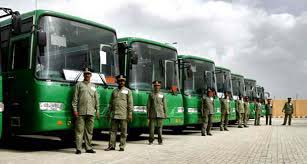
|
Road
Traffic problems and pollution are major challenges for Karachi. The level of air pollution in Karachi is significantly higher than World Health Organization standards. A number of new parks (e.g., Bagh Ibne Qasim, Beach View Park and Jheel Park) have been developed and new trees are being planted in the city to improve the environment and reduce the pollution. The construction of new bridges/ flyovers, underpasses and signal-free corridors (e.g., Corridor 1: S.I.T.E. to Shahrae Faisal, Corridor 2: North Karachi to Shahrae Faisal, Corridor 3: Safora Goth to Saddar) has improved the traffic flow in Karachi. The eventual completion of Corridor 4 (from the airport to Metropole Hotel) is expected to substantially reduce the travel time to reach the city centre and airport.
|
Traffic in Karachi
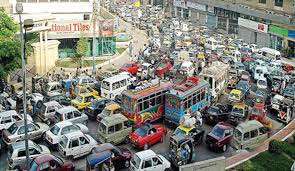
|
Lyari Expressway is a highway currently under construction along the Lyari River in Karachi, Sindh, Pakistan. Lyari Expressway's North bound section is currently under construction, While the South bound corridor is now completed and it was inaugurated for traffic. This toll highway is designed to relieve congestion in the city of Karachi. Karachi Northern Bypass (M10) begins north of Karachi at the end of Mohammad Ali Jinnah Road, near the junction of the M9. It then continues north for a few kilometers before turning west, where it forms an interchange with the N25. After this interchange it eventually turns south back towards Karachi and merges onto the KPT Flyover at Karachi Port.
Rail
|
Rail in Karachi
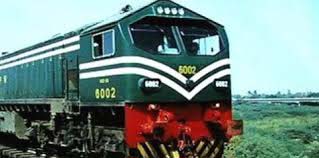
|
Karachi is linked by rail to the rest of the country by Pakistan Railways. The Karachi City Station and Karachi Cantonment Railway Station are the city's two major railway stations. The railway system handles a large amount of freight to and from the Karachi port and provides passenger services to people traveling up country. A project to transform the existing, but non-operational, Karachi Circular Railway into a modern mass transit system had been approved by the government but has been delayed to 2013 due to lack of funds. The $1.6 billion project will be financed by the Japan Bank for International Cooperation and will be completed by 2013. The city government has introduced an initiative to alleviate the transport pains by introducing new CNG buses.
Air
|
Airlines in Karachi
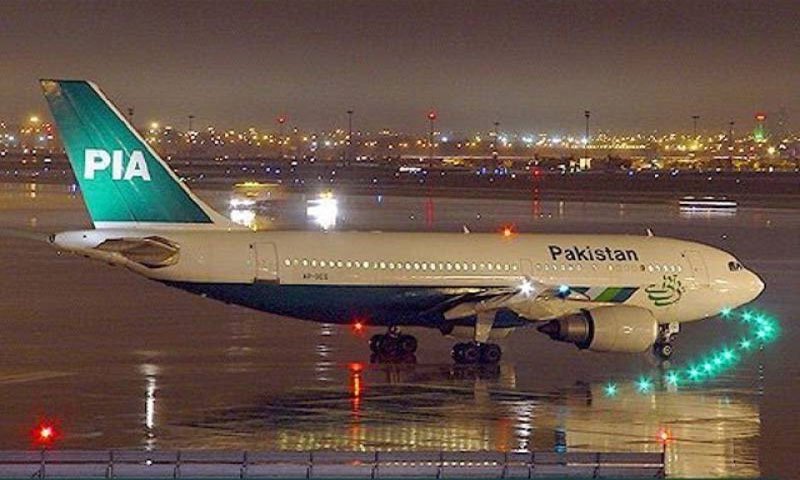
|
The Jinnah International Airport is located in Karachi. It is the largest and busiest airport of Pakistan. It handles 10 million passengers a year. The airport receives the largest number of foreign airlines, a total of 35 airlines and cargo operators fly to Jinnah International predominantly from the Middle East and Southeast Asia. All of Pakistan's airlines use Karachi as their primary transport hub including PIA - Pakistan International Airlines, Airblue, and Shaheen Air International. The city's old airport terminals are now used for Hajj flights, offices, cargo facilities, and ceremonial visits from heads of state. U.S. Coalition forces used the old terminals for their logistic supply operations as well. The city has two other airstrips, used primarily by the armed forces.
Sea
|
Ship in Karachi Navey
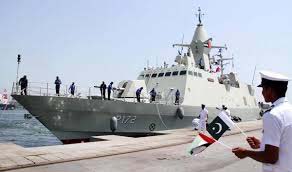
|
The largest shipping ports in Pakistan are the Port of Karachi and the nearby Port Qasim. These seaports have modern facilities and not only handle trade for Pakistan, but serve as ports for Afghanistan and the landlocked Central Asian countries. Plans have been announced for new passenger facilities at the Port of Karachi. Recently Port Qasim Authority (PQA) has announced that an implementation agreement is being signed for the development of a 'pollution free' Coal, Cement and Clinker Terminal (CCCT) worth $175 million with a handling capacity of up to eight million tons per year at port. This step would save the environment from irreparable damages and the health of the port workforce and nearby populations from serious respiratory diseases which would have been a serious threat if the powdery coal was handled in open / bulk on berths at port.
Page Up
|